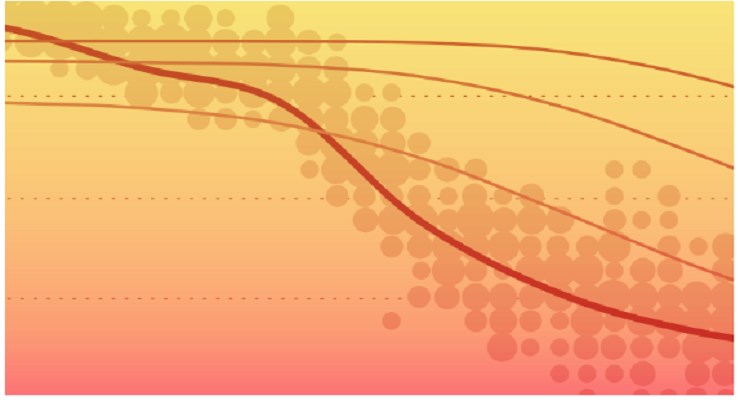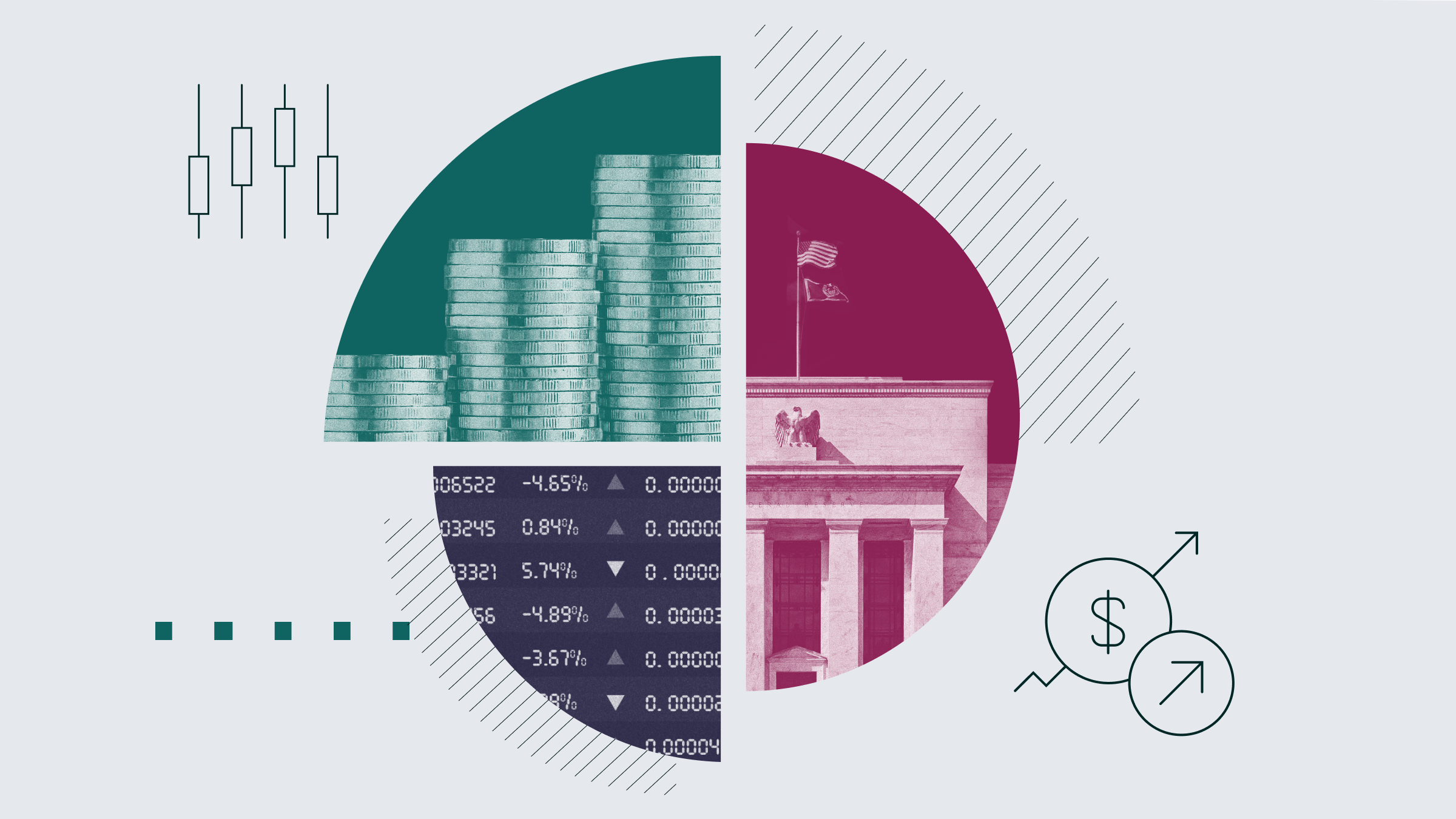Christine Benz: Hi, I'm Christine Benz for Morningstar. The average investor has lost about half of a percentage point per year to poor timing decisions over the past 14 years. Joining me to share some research on this topic is Russ Kinnel. He's Morningstar's Director of Manager Research.
Russ, thank you so much for being here.
Russ Kinnel: I'm glad to be here.
Benz: Russ, it's Mind the Gap time. You do this study every year where you attempt to measure how much investors have actually cost themselves with these poor timing decisions? Can we just start by talking about how you measure this? What do you do to look at the data to draw some conclusions on this front.
Kinnel: We're essentially looking at the fund's official returns, and then we're adjusting that for flows in and out of the fund on a monthly basis. And that way we come up with what did the average investor do, versus what did the fund's official return do. And then we roll all that up using--we asset-weight the investor returns, we average the fund returns to see what are those gaps really like. And then, we drill down and see what are some factors that might have a role in why people don't get the most out of their funds.
Benz: To use a simple example, if a fund had a great return, but I got there late before all the money had been made, my return would be smaller than the fund's published return. That's how this works, right?
Kinnel: That's right. And, of course, that's human nature, that performance affects the way we invest. And so, it's not uncommon for a fund to have great returns. Money comes in, then the returns are not so great. Money goes out, then returns are good again. So, we all have a timing challenge. And it's not just individual investors--financial planners have this problem, institutional investors. It's everyone. So, I don't want to make it sound like this is dopey individual investors. And I think a little of that cost is almost inevitable. But it's worth understanding that and as well as trying to improve how we do with our timing.
Benz: Right, which is one of the goals of your annual research. So, at the category level, or at the asset class level, let's start with a good news story. And this has been a pretty consistent finding from year to year, where the funds that bundled together different asset classes, whether balanced funds or target-date funds, they tend to look pretty good from the standpoint of investors actually capturing what their funds earn.
Kinnel: That's right. Allocation funds have the smallest gap almost every time we measure that. And I think there's a couple of factors in this. One is, as you say, they're combining a bunch of different asset classes. And when you do that, generally you have less-volatile returns. If you've got, let's say, a classic 60-40 portfolio, 60% stocks, 40% bonds, then you hit a down market, the bonds are going to provide some ballast and hopefully make money, but if not, at least lose less than stocks. And so, that provides a smoother return, which means our timing is less important, and also doesn't trigger those emotional responses of fear or greed if it's kind of boring relatively steady returns. Even a 60-40 portfolio is still going to be somewhat volatile, but people do better when things are a little more stable and the timing is really less important.
Benz: Could another factor be that people sometimes own these multi-asset funds, especially target-dates within the context of a 401(k) plan, where they're maybe putting their money in and kind of tuning out?
Kinnel: Yeah, that's the other big piece of that story is that not only do you have better funds for people, but you have this great vehicle of 401(k)s, where people invest steadily. And so, really, I think of when you have a target-date fund, which is a kind of boring, super-diversified vehicle, and you have a 401(k), it's really the best investors coming to beat the best-designed funds. And you have these really good results, because people just keep plugging their money away. We saw that even in the bear market of 2008-09, almost everyone kept plugging away and putting their money to work, whereas hardly anyone with discretionary money was doing that. And so, yeah, it really tells us a lot about where we should head and what are the best practices, because I think really, the more steady we can invest and the better diversified our portfolios, the better results are going to be.
Benz: Another asset class, on the bad news story would be the alternative funds do not look good from the standpoint of investor returns. What's going on there?
Kinnel: Alternative funds have really been a disappointment on a lot of levels. So, for one thing, most alternative funds have lost money or made very little money over the last 10 years. And then, on top of that, investors' timing has been really bad. So, you put the two together, and you have some really bad experiences for investors. And I think part of it is, people entered alternatives, especially early on at the time period we measured, kind of thinking this was the best of both worlds that you get all the market's upside, but then not the downside. But in fact, it's much less that--you have much less upside, and you still get some downside, even if it's not necessarily market-driven. But most alternative funds do lose money from time to time.
And then, I think on top of that you have the complexity makes it hard for investors to do well. And so, we talked about how investors sometimes go in after good performance and out after bad performance. That's really magnified in alternatives funds. So, you see funds have good performance, money comes in, they do poorly, money goes out, and then those funds never come back, which is different from the standard equity, fixed-income world. So, really, I think there's a lot of challenges for alternative funds. On the one hand, the returns are disappointing. On the other hand, investors did really poorly timing it. So, really bad results. And so, I think it speaks to how the investment world needs to do a better job with these funds.
Benz: Well, that's the thing. A lot of these funds were marketed in the wake of the bear market, maybe their days of delivering high utility were behind them for some of those categories. So, I think that the industry definitely shares some blame here.
Kinnel: For sure.
Benz: You also cut the data in different ways beyond the asset class and category level. You looked at volatility, which you've kind of hit on already, that there seems to be a connection. Low volatility, chances are investors are going to do better.
Kinnel: That's right. So, when we group funds by volatility within an asset class--rather than just a category, we do it within an asset class--we find the more-volatile funds have a bigger investor return gap. Investors don't use them as well. And obviously, the more volatile a fund is, the more important your timing is. So, that's part of it. And then, the other part is just, they do tend to spur a fear or greed. You think about a tech fund or an emerging-market fund and one year they are up 50, the next year they're down 20. And so, it's hard to hold on. It's hard to time those well. And so, naturally, we see that play out in investor returns.
Benz: One thing that was somewhat surprising to me is that better investor returns appear to be associated with lower-cost products as well. That one's a little less intuitive. Let's walk through that conclusion.
Kinnel: That's right. So, of course, we know that lower-cost funds tend to have better total returns.
Benz: Right.
Kinnel: But then they also have lower gaps, which means that the investor return is greater not just by the fee, but also because of the gaps. And so, the difference between an investor return in a high-cost fund and the low-cost fund is significantly greater than fees. And I think we talked a little earlier about the confluence of good investors and good products. I think that's part of what's going on here, again, is that people are smart enough to look for low-cost funds tend to use them more wisely. Of course, index funds are a piece of that story. Those are not the most exciting investment vehicles. But people have done a pretty good job of standing pat with those funds. And of course, I think lower-cost funds tend to have better performance. And so, there's a nice reinforcing mechanism there, that people feel rewarded for investing in lower-cost funds. Higher-cost funds tend to take on more risk. They tend to disappoint people and cause people to get out.
Benz: I want to talk about a couple of specific funds that you have highlighted as having especially good investor returns, meaning good investor outcomes. Let's start with Vanguard Explorer. This is kind of an all-in-one small- and mid-cap fund. Investors have done a good job of capturing that fund's very strong returns.
Kinnel: That's right. And it circles both points we made earlier. It's very low-cost, about the cheapest actively managed funds you could get, and almost as cheap as a lot of index funds in small-cap space. So, very low-cost, which means it can more often have outperformance, but it's also boring. It's really boring. It's spread out across a lot of subadvisors with a very diffuse portfolio. That's again, it's not so different from an index fund. And so, I think investors have timed the fund pretty well, because it isn't exciting. It doesn't make you want to rush into it. It doesn't make you think you're going to get rich quick. And so, that's actually worked to investors' favor.
Benz: Fidelity Growth Company is another one. This is a fund that actually employs a pretty aggressive strategy. But it looks good from the standpoint of investor returns. What's going on there?
Kinnel: This one isn't boring. The returns have been great. But obviously, there are sometimes when it gets smacked. And anytime large growth is going to get hit, this fund is going to get hurt. But I think one of the things that's really worked in its favor besides having good returns to begin with, is that the fund has been closed for a long time. And we've noticed that funds that are closed to new investment, tend to have pretty good investor returns. And I think there's a couple of things going on there.
One is simply that you're keeping the--they're preserving the strategy. You're preventing the fund from getting so big the manager can't run it. But maybe the more important piece is that it keeps investors from rushing in at the worst time. If you've closed the fund, and let's say, it then has another two really good years, so in this case, we know growth has had a very long run with companies like Apple and Amazon leading the way, but you couldn't get into this fund after they had those great results. And so, it keeps investors from coming in at the worst time, and I think it maybe keeps some of the hot money out, which also on the flip side is prone to leaving at the worst time as well. So, closed funds are another investor-friendly practice that really matters for investors.
Benz: Russ, this is always fascinating research. Thank you so much for being here.
Kinnel: You're welcome.
Benz: Thanks for watching. I'm Christine Benz for Morningstar.






















